|
|
|
 |
 |
 |
 |
 |
 |
 |
 |
|
 |
|
|
|
|
|
|
|
Here you can find current and archived information from our company regarding our products, services and events.
|
|
|
- 2025
 |
 |
 |
 |
|
 |
|
 |
 |
 |
 |
|
08.10.2025
Firmware update for RDR55.
The firmware for the RDR55 from version E (current processor and audio module) has been updated in some details. Furthermore, the CW transmission mode has been revised. This improves operation in the following ways:
- Sidetone strictly synchronized with keystrokes.
- Practical settings for the timing control for transmit/receive switching (complete monitoring without RX muting, full break-in, semi-break-in, no switching between characters with up to 630 ms PTT delay).
- CW transmission is possible in "DIGI" mode (very low RX delay).
The improved CW operation is only possible with the RDA31D module installed.Please refer to the manual!
|
|
|
|
06.09.2025
Updated software for RSR200.
The software for the RSR200B has been improved in some details and minor functional enhancements have been added. The updated manual contains new chapters on operating the RSR200:
- Detailed explanations of the software structure (RSR200B <-> DLL <-> SDR program interaction) and further information on updating individual software components.
- Multi-channel operation.
- Use of the ExtIO DLL to create your own SDR programs.
|
|
|
|
08.08.2025
New software for RSR200.
The firmware and ExtIO DLL for the RSR200 have been revised. Extended decimation rates up to 64 are available (with improved anti-aliasing filters) and the network connection is now fully functional (including DHCP/DNS). The diagram for setting the parameters for antenna diversity has been converted to rectangular coordinates (easier to use with the mouse). The RAP2 can be controlled fully automatically.
A new driver for the USB interface is available (from Windows 10 / 64-bit). This now requires the provision of two different versions of the ExtIO DLL (for the new and old drivers). Please note the information in the updated manual!
|
|
|
|
08.07.2025
Updated firmware for RDR51.
The firmware for the RDR51 "Pocket" has been updated to correct a minor graphical error (incorrectly resetting the display size after the magnification time expired for the "Magnify" function). Please reload the appropriate RPD file for your device!
Many thanks to those who ordered our RDR52S1 special Ham Radio devices! All devices are now with the customers and are providing great ham spirit.
|
|
|
|
12.06.2025
New firmware for RDR51 “Pocket” and RDR52.
We can not meet the Ham Radio fair in Friedrichshafen this year. But like the years befor we will offer a special edition of our most popular device: RDR52S1.
Can only be ordered during the trade fair from June 27th to June 29th 2025!
|
|
|
|
13.05.2025
VHF Preselector RAP2.
The RAP2 contains several highly selective (SAW) bandpass filters for preselection in the VHF range:
- 70 - 83 MHz
- 83 - 109 MHz
- 109 - 169 MHz
- LC highpass 169 MHz
|
|
|
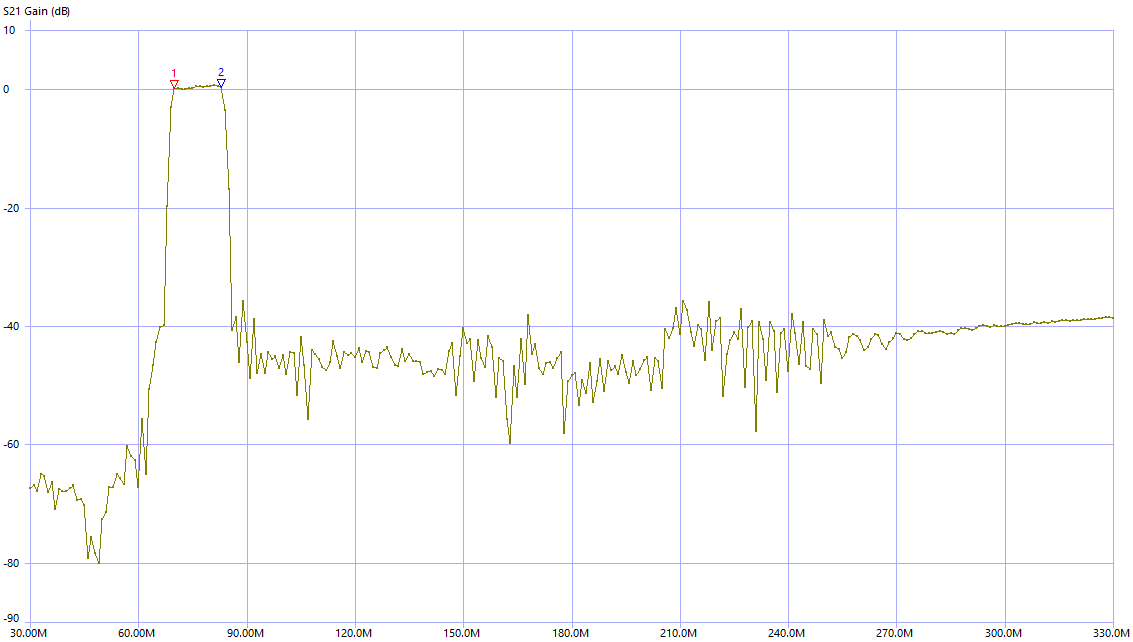 |
|
|
Example bandpass 1: 70 - 83 MHz
A low-noise preamplifier is provided to compensate for the filter attenuation. This makes the RAP2 particularly suitable as an anti-aliasing filter for direct digitizing receivers (“SDR”) in oversampling mode. The RSR200 in particular requires such filters before its broadband VHF input in order to be able to receive certain ranges without interference depending on the selected sampling frequency. From firmware version 1.10, the RSR200 can switch the RAP2 automatically (control via RF cable) and set its own clock frequency to match the respective filter. The RAP2 can be remote controlled via WiFi. A remote power supply for antenna amplifiers can also be connected to the RAP2.
|
|
|
|
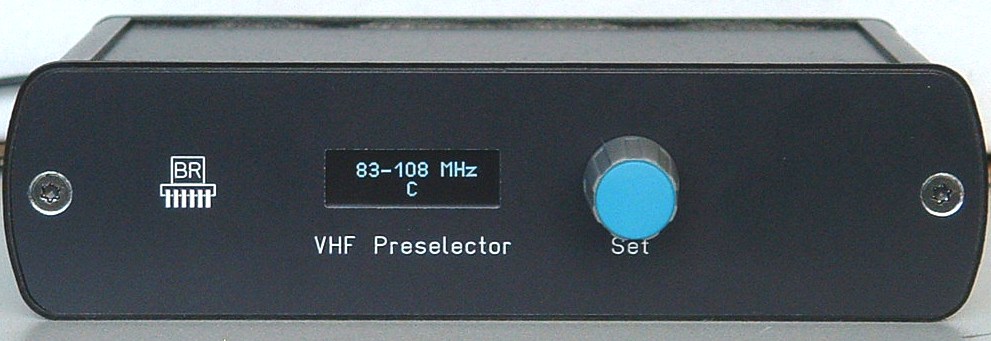 |
|
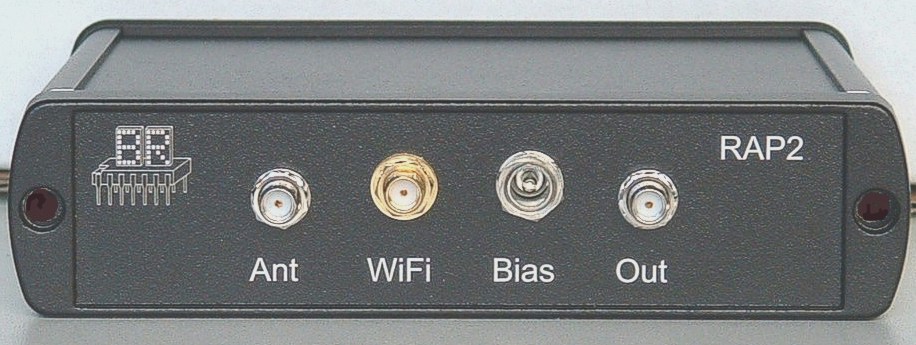 |
|
|
|
|
|
08.03.2025
New firmware for the RSR200
Most of the RSR200 pre-orders have been delivered, the last ones will follow shortly. Many thanks to all our loyal customers! The devices are now being manufactured regularly in series production. Therefore, most of the RSR200s are now available from stock or with only short delays.
The first update of the software is available (integration of the control of external devices such as active antennas RLA4 / RFA2 or preselector RAP1). Please also refer to the updated operator manual!
|
|
|
- 2024
 |
 |
 |
 |
 |
 |
|
 |
 |
 |
 |
 |
|
20.12.2024
Current production status RSR200.
The first RSR200B devices were supposed to be delivered this year (many thanks for your great interest and all those pre-orders!). Unfortunately, we are suffering from delays in part delivery and production. Because of that, no series devices will be manufactured this year.
We expect to start production from 07.01.2025. All pre-orderers will then receive a binding order confirmation with a realistic delivery date.
|
|
|
|
02.11.2024
RSR200: Blackbox receiver (“SDR”) for operation with PC software (like HDSDR...).
The RSR200 is a direct digitizing receiver with two 16 bit / 200 MHz ADC. The two ADCs can independently process the signals from two RF inputs 0 - 71 MHz and forward them to one or two different PCs via two interfaces. A 70 - 250 MHz VHF input is also available. Its signal can be processed by channel 1 alone or by both channels in parallel.
|
|
|
|
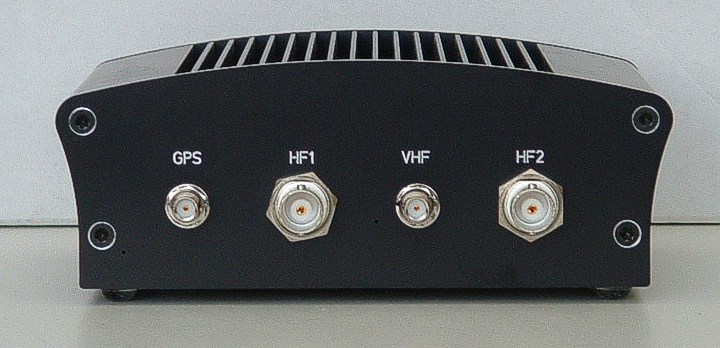 |
|
|
|
Various common signal processing methods are available for the RF inputs:
- Parallel connection of both ADCs to HF1 or VHF: Increases the resolution to 17 bits.
- Serial connection of both ADCs to HF1 or VHF: Doubling of the sampling rate to up to 400 MHz.
- Diversity operation of HF1 and HF2: Addition of the signals with adjustable amplitude and phase (functions like a “QRM eliminator” etc.).
- Each input has an internal switching option for the remote supply of preamplifiers or active antennas (HF1 and VHF common supply).
Our RLA4, RFA2 and RAP1 can be remote-fed and remote-controlled from the PC.
Both ADCs are supplied by a shared clock source. The clock generator is adjustable from 100 - 200 MHz and can be corrected to an accuracy of up to 1 Hz by an integrated GPS receiver.
The digital output signals of the channels can be output via 2 interfaces:
- 1000 MBit LAN with SFP slot: Use of SFP modules for connecting standard patch cables or fiber optic cables.
- 5000 MBit USB 3.0 for USB-C cable (fully occupied, cable can be plugged in in any direction).
|
|
|
|
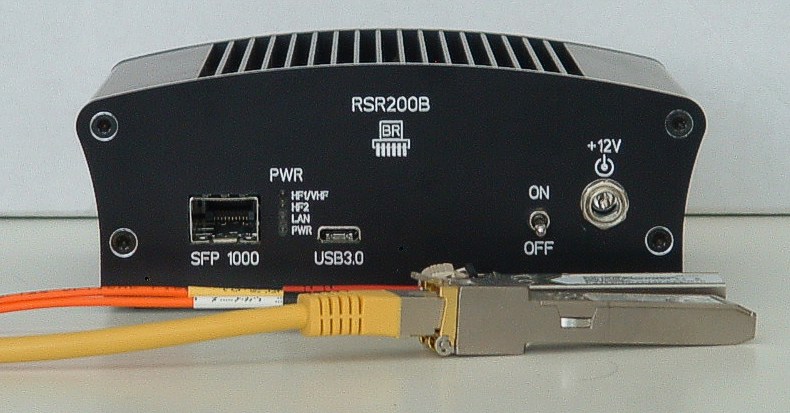 |
|
|
|
The two interfaces can be operated independently of each other (one channel connected to each interface), or both can output the signal of a joint signal processing of both channels. The following maximum data rates, resolutions and bandwidths can be realized:
- LAN (TCP/IP or UDP/IP): 25 MS/s at 16 bit I/Q resolution (about 21 MHz BW), 12.5 MS/s at 24 Bit (about 10.5 MHz BW).
- USB: 100 MS/s at 16 bit I/Q resolution (about 84 MHz BW), 50 MS/s at 24 bit (about 42 MHz BW).
The first firmware version will support a minimum possible data rate of 6.25 MS/s. This rate is too high for a normal Internet connection. The firmware also has no software for direct connection to the Internet (DHCP / DNS server, web host, etc.). The RSR200 is therefore designed with a fixed IP address for direct connection to a PC. If the data is to be sent into the Internet, a suitable SDR program is required to reduce the data rate and to handle the Internet connection. In a later version, both of these features will also be integrated directly into the RSR200.
The USB port has a Power Delivery controller. This allows the RSR200 to be supplied with power from PD-capable USB ports (12 V / max. 12 W).
Version B of the RSR200 is in final testing as a prototype. The firmware is still under development. An Ext-IO.DLL is supplied for connection to the PC software. A first small series is planned for December 2024. The price is expected to be just under €1000 when the device is launched. Preliminary inquiries / orders are welcome!
|
|
|
|
01.07.2024
New firmware for the RDR51 “Pocket” and RDR52.
New firmware versions for the “Pocket” and the RDR52 are available. Some minor bugs were fixed and additional features were implemented at the request of many users.
Many thanks to everyone who ordered the "Ham Radio" trade fair’s special edition of the RDR52! The devices will be dispatched in the next few days. Of course the new firmware is already installed.
|
|
|
|
28.05.2024
Special Ham Radio fair offer for receiver RDR52
Unfortunately, we cannot participate as an exhibitor at the Ham Radio in Friedrichshafen this year. Nevertheless, we would like to make a special offer for the trade fair period to those interested in our products:
- RDR52: Black housing, 0 - 71 MHz + module 2 with 87 - 154 MHz, without DAB
- Special trade fair price RDR52S1 14 bit: 944 €
- Special trade fair price RDR52S2 16 bit: 999 €
The devices can be ordered directly from us by email during the trade fair from June 28th, 2024 to June 30th, 2024. Orders received outside of this time cannot be considered! Only while stocks last! Shipping will take place from July 1st, 2024 (against advance payment or cash on delivery).
|
|
|
|
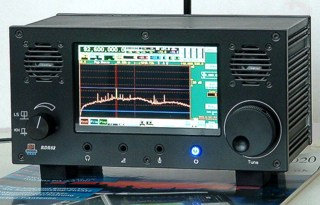 |
|
|
|
Ferrite antenna RFA updated to version 2
The ferrite antenna RFA1 has been revised and is now available in version 2 (for now, only variant B for outdoor installation). The following changes have been made:
- Significantly more ferrite material (95 g instead of 55 g).
- Ferrite type 43 to achieve higher quality in the LW and MW range.
- Very low-attenuation electronic switches for tuning (capacitor switching, without varactors).
- Optimization of the amplifier for extremely low intrinsic noise (double SFET with 2x 40mS).
- Gain maximization of the ferrite rod coil for the LW and MW range (limitation to 137 kHz - 2.0 MHz, omission of SW range).
Thanks to these adjustments, the RFA2 achieves a significantly better reception performance (less intrinsic noise, higher output level) compared to the RFA1. Reception is comparable with the RLA4G loop antenna and similar designs. However, the RFA2 is considerably smaller and lighter and even less sensitive to QRM. For users without the possibility of setting up "annoying" (easily visible) external antennas, the RFA2 offers a way to avoid the domestic interference fog, at least in the LW and MW range.
The devices will be available from June 2024. Please also note our new price list valid from May 28, 2024.
|
|
|
|
13.02.2024
New variants of receiver RDR52!
So far, the RDR52 has been manufactured in version "C": 16-bit ADC with a clock speed of around 84 MHz. The circuitry of the device and the complete signal processing chain have now been converted to twice the clock frequency of around 167 MHz. This results in an expansion of the reception range, especially the elimination of the previous gaps in the range of 30 - 50 MHz and 110 - 136 MHz. This means that, at the request of many users, the aviation radio range can now also be received completely.
The new devices are offered in two basic versions:
- RDR52B1: 14 Bit ADC, 0 - 71 MHz.
- RDR52D1: 16 Bit ADC, 0 - 71 MHz.
The available expansion modules are also adapted in the frequency range:
- Module 2: Receiver Unit 87 - 154 MHz.
- Module 4: Exciter 10 mW 0,1 - 154 MHz.
The devices are available immediately.
Please also note our new price list from 13.02.2024.
|
|
- 2023
|
 |
 |
 |
 |
 |
 |
 |
|
 |
 |
 |
 |
 |
 |
 |
|
11.12.2023
Christmas special offer until 31.12.2023: When you purchase a software option for the Pocket or the RDR52, you will receive an additional option free of charge!
This offer applies to all used and new devices. For example, select the recommended "Broadband Spectrum" option (up to 52.4 MHz spectrum width), and receive the memory doubling or screen dump function of the flash recorder, the FSK decoder or the 4 additional "high-end" FM-W filters free of charge!
Order by email, stating the device serial number. You will receive the activation code immediately (max. 1 W/D) after receipt of payment by bank transfer or PayPal to our email address. In this case, the 14-day right of revocation expires immediately after receipt of the code!
|
|
|
07.12.2023
New Software for the RDR52. The firmware enables the device’s complete remote control via WiFi. For now, the RDR52 can be connected to SDR applications via an "ExtIO DLL". Thus, programs like HDSDR or SoDiRa can now use the RDR52 as an "SDR box" with a bandwidth of up to 81.92 kHz.
Various functions can also be controlled from the PC, e.g. remote control of an RLA4 antenna or an RAP1 automatic preselector. The RDR52‘s rotary encoder can also be used for tuning when operating as an "SDR".
Operation of the RDR52 with SDR programs via WiFi should be regarded as "experimental" and work in progress! Satisfactory results can only be achieved with a perfect WiFi connection! The update is free of charge and without any guarantee of function under all possible conditions!
|
|
|
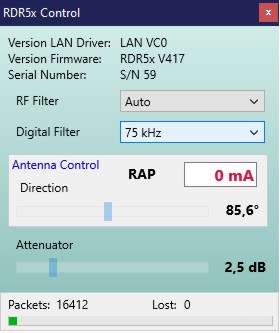 |
|
|
|
09.10.2023
New "L" version of the RLA4 antenna amplifier. The last versions of this amplifier were primarily optimized for operation in the RLA4 D to GS antennas. In principle, they required the control via data for setting the amplifiers (via RSWx control units, RAP1 preselector or a receiver from the RDR5x series). This made them less suitable for DIY designs without electronic directional control.
The new version 4L now activates its amplifiers even without data reception and can therefore be operated without a control unit. The input stage has also been optimized in order to be able to work as universally as possible with many different loop constructions.
|
|
|
|
03.08.2023
New firmware for RDR51 “Pocket” and RDR52!
The firmware now includes a NAVTEX decoder for the FSK demodulator. Text printing on the screen is enlarged to 3 lines. Some more options to save text and wideband IQ files to a PC and some other small enhancements added. Please read the handbooks carefully!
|
|
|
|
17.07.2023
Update for the Pocket’s LAN driver. The original driver version B0 of the last update can block WiFi access under certain circumstances (emergency software is running on the device instead of the normal operating software). The new driver version B1 can also work with older emergency software and thus continue to connect the Pocket to the WiFi after failed updates.
Updating the LAN driver and the new firmware is also recommended if WLAN VB0 / firmware Vx13 have been loaded correctly and are running reliably.
09.07.2023
New firmware for all Pocket versions. Installation of many functions of the newer RDR52 devices such as Magnify function, other waterfall colors or FSK demodulator.
|
|
|
|
17.06.2023
From 23.06. to 25.06. the Ham Radio fair will again take place in Friedrichshafen!
Unfortunately, we can not participate this year. Nevertheless, we would like to continue an old tradition: For the fair we always put on some custom productions of our most popular devices. Currently, these are our RDR52 receivers. Therefore we are happy to present you the following special offer for the duration of the fair:
RDR52C12, device with FM / 2m module without DAB at the price of the basic device without expansion module: € 1.250
Ordering will be possible from 23.06.2023 up to and including 25.06.2023 via email. Orders before or after this date cannot be considered! The delivery of the devices will start immediately after the fair.
We wish all visitors a lot of fun at the Ham Radio!
|
|
|
|
21.04.2023
The RDR52 received an updated firmware version. Version Vx15 includes FSK decoder for simple RTTY / ASCII and binary formats.
Addendum 23.05.2023: The firmware has been downgraded to the status "Beta" (test version). It is available on request via email (please specify the serial number of the device!). The officially latest valid firmware is the respective version of the delivery status (new devices: Vx13).
Please also note our new price list and special offers. We are very pleased to be able to lower some prices again due to the slowly easing "supply crisis".
|
|
|
|
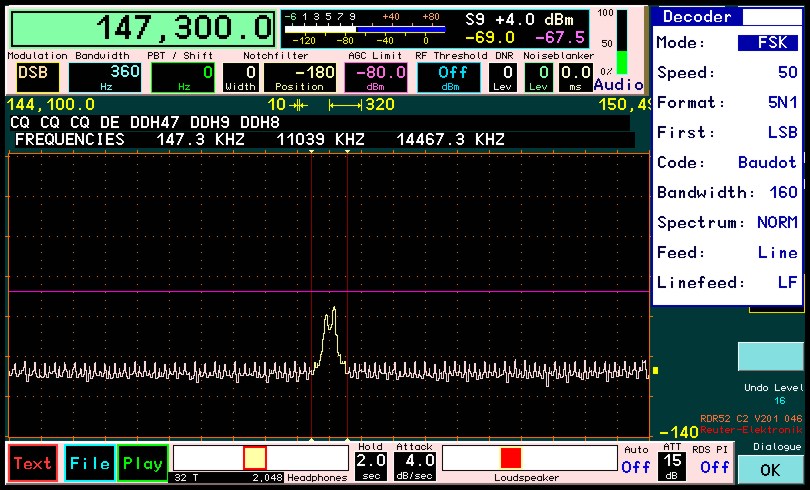 |
|
|
|
15.01.2023
New firmware for the RDR52 (at the bottom of the page in "Software", please also note the new operating instructions under "Documentation").
Some new functions have been added to the RDR52’s user interface. The main features consist of the remote control possibility for the use of the RAP1 as an automatically running preselector, the often desired adaptation of the waterfall diagram to "common" colors, as well as a preparation for the implementation of decoders for "digital" operating modes.
The decoders will gradually be implemented into the software and are available as an additional option via activation code. Which operating modes will be supported is not yet fixed. Of course different ASK and FSK modes, possibly CW (please send us a short email what seems most important to you). Since our devices do not contain a (PC-compatible) CPU and no text processing software, decoders for purely PC-tailored modes (e.g. FT4/8) are, however, hardly possible internally.
|
|
|
|
13.01.2023
New versions of the active preselector RAP1 available! The devices now include a direct remote control possibility from receivers RDR5x (via coax cable). The headroom of the built-in amplifier has been increased to 0 dBm with no attenuation set. Version RAP1D can remotely feed and control RLA4 antennas (no additional control unit RSW necessary) as well as supply any active antennas with max. 12 V / 200 mA.
Remote control software via WiFi from a WIndows PC is also available now ("Software" at the bottom of the RAP1 page).
|
|
|
|
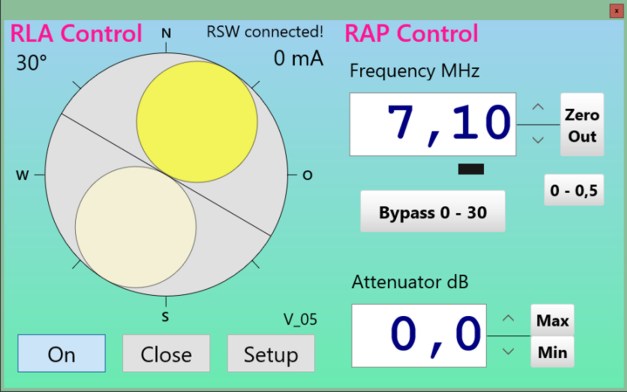 |
|
|
|
|
- 2022
 |
 |
|
01.09.2022
Please take note of our new price list!
Unfortunately, inflation is not sparing our company. On the contrary, small companies are once again particularly hard hit. Many electronic components, now also "simple" things like passive or mechanical parts, can only be procured for a high surcharge or not at all.
Nevertheless, most of our devices are still available in the short to medium term! However, please plan ahead for the rest of the year!
|
 |
 |
|
05.07.2022
Many thanks to all visitors of our booth at the Ham Radio 2022!
We were very happy to meet old acquaintances once again and welcome new interested parties! It is amazing how well known and appreciated our devices have become!
|
 |
 |
|
14.06.2022
RAP1: Active preselector 0.5 - 30 Mhz.
Prototype, series production from approx. Mid-July 2022.
|
|
|
 |
 |
|
RAP1B: Version with integrated antenna control unit for RLA4
The RAP1 is a combined inductive / capacitive coupled 2-channel bandpass filter with fully electronic tuning. There are 3 switchable filter modules with 1:4 tuning range each: 0.5 - 2.0 MHz; 2.0 - 8.0 MHz; 8.0 - 30 Mhz.
Each module has a finely switchable capacitor network for tuning in minimum 10 kHz steps. All switching is done by reed relays, opto-MOS relays and high linearity CMOS analog switches. No capacitance or switching diodes are used.
This can contribute significantly to improving reception (no sheath currents on the antenna cable, less interference, insensitivity of the cable routing, safe (natural vibration-free) operation of active antennas, etc.).
In addition, the RAP1 has an adjustable attenuator for attenuating very strong antenna signals. Attenuator and amplifier are also used to automatically correct the passband attenuation of the RAP1 according to the current tuning (attenuation of the bandpass filters). This varies depending on the frequency and the filter module used due to different losses in the filter elements. The control adjusts the attenuator appropriately in each case so that the passband attenuation is largely independent of frequency. In some cases, even negative attenuations, i.e. amplification, can be set.
The RAP1 can also be equipped with an integrated control unit for RLA4 antennas. In this case, remote feeding and adjustment of the reception direction of the RLA4 antennas are possible without additional control. All current receivers of the RDR5x series can remotely feed the RAP1 and automatically tune the frequency along.
The frequency setting is done only with a rotary knob without any further manual band switching or range selection. The internal control takes over each switching operation according to the set frequency. Tuning is possible in steps of 10 kHz, 100 kHz or 1 MHz (shifting the cursor to the desired position of the frequency display).
Adjusting the RAP1 can also be done wired remotely via the cable from the receiver (remote power supply also possible, otherwise at the device with 9 ... 15 V). Furthermore, the RAP1 has a WiFi transceiver for wireless remote control via a WiFi network and the Internet (if the WiFi network has access to the Internet).
What selection values does the RAP1 offer? It is not intended to filter out individual narrowband transmitters (that is what the RX is for!), but mainly to relieve the RX from strong transmitters and interference far away in frequency. Especially modern RX (SDR, Direct Digitizing Radio Receivers) offer excellent selection characteristics in close range around the reception frequency, but suffer especially from strong signals in the far range (high sum signal of broadband antennas -> clipping of the ADC). On the other hand, these receivers can often display a wide frequency range ("panorama adapter", spectrum analyzer). This characteristic should not be suppressed too much by the preselector.
The RAP1 was therefore developed as a broadband design with a bandwidth of approx. 10 - 20 % of the reception frequency. This allows good attenuation of signals lying far away with simultaneously low attenuation around the reception frequency. This means that the spectrum in the neighborhood of the signal just received is still easily visible (e.g. an amateur radio band). In addition, the need for constant retuning is greatly reduced for small changes of the reception frequency. Typically, one can "crank" over the SSB and / or CW segments of an amateur radio band without having to retune the preselector.
The following images illustrate the selection characteristics of the RAP1. They were recorded in broadband on a digitally generated broadband noise ("shaky" curve) in real time on a RDR55 equipped with 4 units of 16 bit ADC.
|
 |
 |
|
The 3 individual bandpass filters are designed in such a way that above the highest tuning frequency (2.0 MHz, 8.0 MHz, 30 MHz) there is an additional notch filter for steepening the upper slope.
|
 |
 |
|
04.05.2022
New software version 1.3 available for RDR52!
The Vx13 software contains some minor bug fixes and an enhancement of the Bluetooth driver (automatic connection to audio devices when the RDR52 is turned on).
Please also observe the new operating manual!
|
 |
 |
 |
 |
|
30.03.2022
New firmware v8.0 for the antenna control units RSW3 and RSW4 is available (each in the software tab of the antenna web pages)!
The updates allow the display brightness to be adjusted to suit the environment. They can be loaded into the devices with the Windows remote control software RLFA (new: version 04) via a WiFi connection.
Please also observe the extended operation manual (each in the "Documentation / Software" tab)!
|
|
|
|
04.03.2022
The updated manual and a first software update for the RDR52 are available!
The update contains minor functional enhancements and improvements in operation as well as bug fixes of the first version v211.
|
|
|
01.02.2022
New price list.
Unfortunately, we too now have to adjust the prices of our devices due to sharply increased procurement prices (“chip crisis”) and considerable inflation. Since we were still able to buy smaller quantities of the most expensive IC (FPGA of the RDR5x devices) at tolerable prices, the new list is initially valid until stocks are exhausted. After that we have to recalculate the possible conditions.
We thank you for your understanding and despite everything, we wish you a lot of fun and great reception success with our devices, which are completely handmade in Germany!
|
|
|
15.01.2022
New loop antenna amplifier version "4J" now in all variants of the RLA4!
The new RLA4J amplifier was specially designed for the RLA4G/GS. This antenna is specified for frequencies up to 30 MHz. The amplifier includes advanced filters for attenuation above 30MHz. In particular, the constantly increasing interference from broadband services such as DAB/DVB or mobile communications can easily cause interference in amplifiers with a higher bandwidth in the vicinity of transmitting antennas. The 4J amplifier is significantly less sensitive to these disturbances than the previous types.
Due to the installation in the smaller antennas RLA4 D to F, their upper limit frequency now drops to 30 MHz (previously specified up to 54 or 71 MHz, with some sensitivity also up to several 100 MHz). Individual circuit boards for self-construction of loop antennas are now also being delivered as version 4J. Please note the changed data sheets for the RLA4J board and RLA4 D - F antennas.
|
|
- 2021
 |
 |
 |
 |
 |
 |
 |
 |
|
 |
 |
 |
 |
 |
 |
 |
 |
 |
|
23.11.2021
New device from our successful receiver / QRP transceiver series RDR5x: RDR52.
|
|
|
|
 |
|
|
|
RDR52 in standard “black” and special “metal”
The RDR52 can basically be seen as a desktop version of the popular Reuter Pocket mobile device. Astonishingly, the Pocket is often used as a full-fledged desktop receiver. Many operators report that they have sold their “large” devices and now only use the Pocket because it pairs good reception properties with simple operation and offers a very effective spectrum display while keeping the power consumption to a minimum.
However, the battery-powered Pocket was never designed for that purpose. First, it needs a stand-up aid to be easy to operate on your desktop (display almost vertical). Second, the playback volume of the loudspeakers is low and turning the scroll wheel feels finicky. Third, operation on a constant charging current supply is suboptimal for the built-in batteries: Constant full charging shortens their service life.
The RDR52 avoids these disadvantages. It essentially contains the circuit and thus the display and reception properties as well as the operating options of the Pocket. Due to the larger housing (heat dissipation) and a slightly higher possible current consumption (no batteries as power supply), improvements in the IM behavior (more powerful preamplifiers and AD converters) could be achieved. Other differences to the Pocket include:
- Aluminum profile housing 190 x 90 x 100 mm│ with 5 mm thick front and 2 mm thick rear panel, powder-coated / anodized.
- BNC sockets for antenna connection, separate for 0 - 71 MHz, FM / 2m / DAB and exciter / QRP transmitter.
- Large rotary knob with solid optical rotary encoder.
- Additional rotary knob for volume adjustment of headphones and loudspeakers.
- Two 32 mm loudspeakers with good bass reproduction.
- External power supply DC voltage 9 - 15 V (common hollow pin socket with 2.5 mm pin).
All the Pocket's enhancements are also available for the RDR52 (broadband spectrum with up to 52.6 MHz display width, 8 different FM filters for extreme DX to high-end stereo, up to 16 GBit flash memory for audio or I/Q recordings, screen dump of the display to the recorder, WiFi, Bluetooth, power supply and control of the RLA4 / RFA1 directly from the antenna input, ...). Two basic hardware versions will be available: Standard black with simple loudspeakers and plastic knobs, or a special version with metal knobs and aluminum loudspeaker membranes.
The equipment of different transmitter modules and frequency ranges has been a bit expanded in contrast to the Pocket. Two modules can be installed in the RDR52 at the same time (Pocket: only 1 module). This means, for example, that the FM module and the SW QRP transmitter can be installed at the same time, or the broadband exciter can be installed without the need for an FM module. However, equipping both transmitter modules (exciter and QRP transmitter at the same time) is not possible.
The RDR52 is in production and is expected to be available from the end of December 2021. Prices according to the current price list.
|
|
|
21.11.2021
Enlarged version of the RLA4G loop antenna available: RLA4GS.
- Height 68 cm, diameter 77 cm, completely made of aluminum / stainless steel / UV-resistant plastic.
- Cross loops made of 12.7 mm (1/2”) coaxial cable with “corrugated sheet” full metal shielding.
- 4.3-10 connectors for loop elements: Light, robust, waterproof, easy to assemble (HF bypass: TNC socket).
- New amplifier RLA4J2: Fully integrated circuit without transistors, very low noise and extremely IM-proof.
- Supply (6 V / 70 mA) and direction control (RS-232 from control unit RSW2-4 or RDR5x receiver) via HF cable.
|
|
|
|
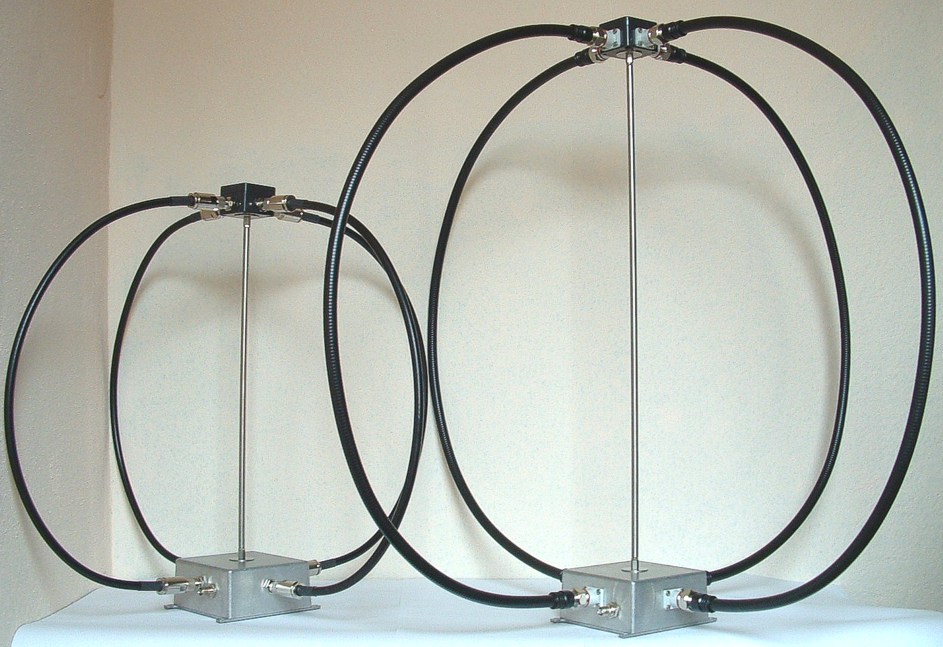 |
|
|
|
RLA4G and RLA4GS
|
|
|
|
19.06.2021
Special offers during the Ham Radio fair! Orders can only be placed for the duration of the fair from June 25th, 2021 to June 27th, 2021 via email to B.Reuter@[our web address]!
As every year, we are offering a special series of our popular Reuter Pocket receivers:
Pocket S1 2x14 Bit Direct Conversion Receiver 1 kHz - 30 MHz + 50 MHz - 71 MHz + 87 MHz - 110 MHz + 130 MHz - 156 MHz: 999.00 €
We are also offering a special version of our Reuter sPocket this year:
sPocket S1 2x16 Bit Direct Conversion Receiver 1 kHz - 30 MHz + 50 MHz - 71 MHz + 87 MHz - 110 MHz + 130 MHz - 156 MHz: 1699.00 €
The delivery of the devices begins immediately after the trade fair on a first-come-first-serve basis, as long as our stock lasts. Orders that cannot be delivered immediately will be delivered a few weeks after the trade fair. Unfortunately, the supply situation is currently very tense, so an early order ensures a faster delivery!
We wish all interested parties a lot of fun strolling around the virtual fair, always the best radio conditions and good health!
|
|
|
|
23.04.2021
The RFA1B has arrived!
|
|
|
|
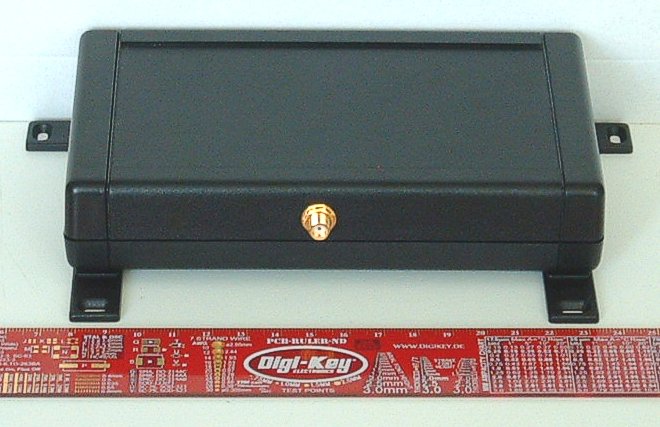 |
|
|
|
The active ferrite antenna RFA1B is the weatherproof outdoor version of the RFA1A. It does not contain a built-in control and can be remotely adjusted using an RSW4 remote controller or one of our Pocket, sPocket or RDR55 receivers. The high output power and digital control allow for long cables between the antenna and the control unit / receiver. Its small size allows it to be installed inconspicuously at a convenient reception location. By forgoing the internal control (especially omission of the display -> no interference from intrinsic interference), the RFA1B achieves a high level of sensitivity.
The RFA1B will be available from May. Orders will be accepted from the end of April when the new price list is published.
Note: All current RFA1A devices contain modified firmware with the option to switch off the integrated display. This prevents any intrinsic disturbances. Older devices can be sent in to update the firmware (please inquire by email beforehand).
|
|
|
|
29.03.2021
New software for all receivers available.
For RDR51 “Pocket”, RDR53 “sPocket” and RDR55, the latest firmware is available for download free of charge on the corresponding product pages. Please note the updated descriptions (PDF) in the “Documentation” sections. The most important additions:
- Tuning step size 8.3333 kHz (or any other with 0.3 Hz period) with real periodic fraction to avoid additive tuning errors when continuously adjusting the reception frequency.
- Frequency tuning by tapping the spectrum / waterfall on the touchscreen. The high-resolution and precise spectrum display of the RDR devices allows the selection of individual spectral lines and immediate adjustment to the frequency of that line. Suitable touch pens with a fine tip are available for all devices to enable the touch screen to be touched as precisely as possible (generally less precise than a computer mouse).
|
|
|
|
10.03.2021
New tablet for the RDR 53 “sPocket” available.
With immediate effect, tablets from the latest production (version “X”) will be supplied with the sPocket. These are significantly more powerful and thus enable faster operation and spectrum display. The WiFi connection between the tablet and the basic unit is also more stable. A touch pen is supplied with the new tablets (more precise operation of the touch screen)!
We offer an inexpensive upgrade service for older devices. The previous tablet can be converted to Windows 10 and used for any purpose (upgrade 250 euros) or returned (upgrade 150 euros).
Depending on availability, the returned tablets that are still in good condition are resetted to Windows 10 and are available as used devices with a 6-month guarantee for 150 euros!
|
|
|
- 2020
 |
 |
|
28.12.2020
Updates for the firmware of the antenna control units RSW3 and RSW4 and for the Windows remote control software RLFA for RLA4 and RFA1. The new versions contain small bug fixes (switching the antenna on/off via PC software), as well as the complete remote control of the RFA1.
|
|
|
 |
 |
|
RFA1 remote control via WiFi / Internet
|
|
 |
 |
|
16.12.2020
The product page for the RFA1 is online. The antenna is now in full production, please note the current price list on the homepage.
Due to the measures to contain the corona pandemic (“Lock-down”), we will no longer deliver any goods this year (with the exception of deliveries that have already been ordered and confirmed). We hope to be able to provide you with our usual service of prompt order processing and delivery from January 2021.
Merry Christmas, a Happy New Year and all the best for 2021!
|
 |
 |
|
07.10.2020
The RFA1 is coming!
Our RLA4 loop antennas, especially the shielded versions 4E and 4G, offer excellent broadband reception without tuning and with little interference from the environment. However, in this day and age, such interference continues to increase and impair reception. There are 2 basic options for further reducing interference: Frequency selectivity (tuning) and reducing the dimensions of the antenna.
Our latest development follows both paths: The active ferrite antenna RFA1. It works with a tunable resonant circuit on a ferrite rod that is only 8 cm long. The resonant circuit coil is also electrostatically shielded (“Faraday cage”). The result is an extreme insensitivity to interference.
Of course, the RFA1 offers other special characteristics compared to conventional ferrite antennas, which enable high reception performance and comfortable operation despite the small dimensions and the need for tuning:
- Highly sensitive amplifier with extremely low self-noise and very low distortion.
- Complete metal shielding of the amplifier and cage shielding of the receiving coil. Little hand sensitivity is the result.
- Continuous tuning without changeover switches or plug-in modules from approx. 0.13 - 10 MHz (prototype, minor changes in serial production possible).
- Electronic tuning without mechanical parts (rotary capacitor) or capacitance diodes (no diode intermodulation).
- Adjustable quality multiplier for changing bandwidth and output level.
- Remote control via HF cable with RSW4 (WiFi / Internet possible) or from the (s)Pocket receivers.
- Power supply via internal 9V block (7.4V Li possible), DC “hollow pin” connection or rf cable 6 - 15 V / approx. 35 mA (without display lighting)
The RFA1 should be available from around the end of October.
|
 |
 |
|
18.09.2020
Update for WLAN driver of the RDR Pocket and PC software.
The WLAN driver V50 of the software from 09/14/2020 can cause problems with the Bluetooth connection to audio playback devices. Therefore, we uploaded a new software for the Pocket: RDRWLANV52.BIN.
The Windows program RDR51E for uploading the software to the Pocket was provided with longer waiting times when deleting the memory for older devices.
|
 |
 |
 |
|
 |
 |
|
14.09.2020
New software version x10 for RDR51 “Pocket”.
The new software for the Pocket contains some new functions and already provides preliminary (“beta”) functions for all devices. Bug fixes for minor errors and changes according to customer requirements are also integrated. The software and the updated manual can be downloaded from the Pocket site. Here is a short list of the most important upgrades:
- DAB slideshow.
- Memory preview with continuous activation of the stored stations.
- Remote control of the RLA and RFA antennas via WiFi. Devices from SN 0200 have a remote feeder for active antennas, as well as a built-in RSW control unit for direct connection of an RLA / RFA.
- New paid option “Camera”: Direct screen dump of display images into the flash recorder. These can later be transferred to a PC via WiFi.
- Further development of the SBSP for increased accuracy of the time-frequency transformation (representation of the bins in the spectrum) and exact WYSIWYG generation of the audio signals from the spectrum. Less audio distortion even with minimum bandwidth (down to 20 Hz)..
|
|
|
12.09.2020
New control unit RSW4 for RLA and RFA antennas.
The development of active antennas is moving towards ever finer adjustability of parameters such as reception direction or gain. Tunable antennas require that the frequency can be adjusted over a wide range. The remote control of such antennas must be able to set these parameters precisely and comfortably. Therefore the control unit RSW3 was further developed to version 4. It contains a high-resolution optical rotary encoder without detent, as used in high-quality receivers or measuring devices. The device also has its own on/off switch for complete disconnection from the power supply. When switching off, the current setting of the RSW4 is saved and restored when switching it on again.
|
|
|
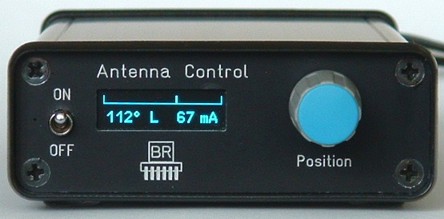 |
|
|
|
09.07.2020
Operator manual for RLA4G online!
Serial production has started and the first antennas will be delivered from week 29.
|
|
|
 |
|
 |
 |
|
30.06.2020
From 07/01/2020 to 12/31/2020 2% discount on all prices!
With this we pass on the largest part of the temporary VAT reduction to our customers. We very much hope that this measure can also offer a small incentive to buy German products. Check out our products!
|
|
- 2019
 |
 |
|
30.12.2019
New software for the sPocket available.
In addition to some minor improvements, the software mainly includes activation of the DAB slide show and complete wireless remote control of the RLA4 antenna without additional software (see below).
|
 |
 |
|
24.12.2019
RLA4 goes IoT. The control unit for the cross-loop antenna RLA4 has been expanded to include a network processor and a WiFi module. The antenna can now be controlled wirelessly from any access point (e.g. WiFi router). If the router is connected to the Internet, control can even take place from anywhere in the world. Remote-controlled receivers (“Internet receivers”) can now be equipped with a remote-controlled, highly sensitive and directionally rotatable loop antenna.
The software for controlling the antenna is fully integrated in our newer, WiFi-capable receivers (currently sPocket only, Pocket and RDR55 will follow). For all other applications, an app for Windows and other OS (Android, iOS, macOS in development) is available.
|
 |
 |
|
04.10.2019
Power packs with a circuit for generating the necessary 12 V operating voltage are available for the autonomous power supply of the sPocket (as well as Pocket and RLA4).
|
 |
 |
|
21.08.2019
The complete manual for the sPocket with all options (FM / DAB, Exciter ...) is now available for download on the sPocket page (within the section "Documentation").
Visit our booth at the UKW-Fachtagung in Weinheim on September 7th, 2019! We have some new products with us!
|
 |
 |
|
06.07.2019
New control unit for RLA4 antenna available!
The new control unit with a bright OLED display enables the setting and display of the reception direction directly in 1░ steps. Furthermore, additional parameters such as the current power consumption are displayed.
|
 |
 |
|
13.06.2019
The Ham Radio amateur radio expo will take place in Friedrichshafen on Lake Constance from June 21-23. Of course, we attend, too! Our booth will be in Hall A1 (No. 836 on the western edge of the hall). We have demonstration equipment for each of our products. Above all, the big novelty this year is the public demonstration of the sPocket, which is now ready for series production. New Pockets with an improved FM module and our current RLA4 antennas which possess a fine-tuned direction of their rotation control are also displayed. We will only be able to bring a few devices for free sale. If you are interested, we ask that you pre-order to plan our transport capacities.
|
 |
 |
|
27.02.2019
Thank you to everyone who pre-ordered a sPocket!
The pre-order phase ends on February 28th, 2019. All interested parties with a valid order confirmation will receive their devices in the next few weeks. And as was promised, all additional options are included free of charge.
The first series with device types C (2x 16 bit ADC) is almost ready. Unfortunately, the housings are still missing. These have to go through many hands (material procurement, water jet cutting, CNC machining, chromating / anodizing, coloring / decor, assembly). There are always delays, especially because of the extraordinarily high sick leave everywhere this winter. We ask for your understanding.
The versions D (4x 16 bit ADC), especially the very frequently ordered version D4 (with 100 mW Exciter 0.1 - 156 MHz), are manufactured immediately afterwards. We hope to be able to deliver these around the end of March / beginning of April.
|
 |
 |
|
01.01.2019
The firmware for all Pocket versions is online again. It contains some bug fixes and adjustments for the various versions. The upload software RDR51C now checks the version numbers of the firmware and WiFi driver for compatibility to warn the user from loading the wrong files.
The sPocket won’t go into serial production this year. The first devices can be expected as early as february. We are accepting pre-orders beginning from 01.01.2019. The first 20 sold devices receive a free activation of all available software options (broadband spectrum up to 52.6 MHz, 8 FM-W filter for DX and high-end stereo, spectrum resolution up to 2.5 Hz / line).
The popular RLA 4 crossloop antennas received updated internal electronics (board version “4G”). It now offers better signal-to-noise ratio, increased IP2 and IP3 values and an effective VHF filter. The additional feature “whip operation” is omitted again. It only o Die Zusatzfunktion “Whip-Betrieb” ist wieder entfallen. Only with a special setup (preferably high and far away from interfering sources), useful reception possibilites could be achieved. The three variants (now called D, E and F) with shielded and unshielded FR4 loops as well as stainless steel band remain.
The “whip operation” will offer a special “RWA” variant in the future. It consists of symmetric setups (“Active dipole”), which are, like the RLA, arranged crosswise, while the receive direction can be rotated electronically. As the RLA, the RWA is designed for interior and mobile operation (small, light space-saving transportable thanks to its retractable telescope rods).
Please consult our current price list with the now included sPocket and the newest versions of the RLA4 antenna!
|
|
- 2018
 |
|
25.05.2018
With the inception of the General Data Protection Regulation (GDPR), we would like to inform you both simply and clearly, as well as completely and comprehensively about the use of your data by our company and about your rights. Please visit our Privacy Policy page. Of course, we also adapted the data processing in our company and made all necessary arrangements in accordance with the law, so that your data is best protected by us and is only used to the absolute necessary extent.
Our attendance at the Ham Radio 2018
Because of the extremely unfavorable date we sadly can't attend the Ham Radio in Friedrichshafen this year. Our next exhibition appearance is planned for the UKW-Fachtagung in Weinheim.
10.04.2018
The Reuter Pocket is now available with the newest firmware VxE8. Have a look at the Operator Manual on the homepage. Variant C3 (5 W transceiver) is currently out of production and replaced by variant C4 (wideband low level transceiver).
|
|
- 2017
 |
|
23.04.2017
After multiple requests, the RDR Pocket is now available in an additional version: C4. It combines the FM / 2 m / DAB(+) receiving unit with a broadband exciter similar to the RDA31 for the RDR 54 and 55 devices. Transmitting (max. 2.5 mW output) on every frequency from 100 kHz to 151 MHz in high quality is now available.
New price list with dab modules for RDR 54/55 and Pocket C4.
04.04.2017
RDR Pocket software is available in the newest version: RDR Pocket.
17 Bit and 18 Bit ADC module (RAD17FF and RAD 18FF) with DAB receiving option will be available for RDR54/55 soon.
New pricelist is valid (attached Pocket special equipment and battery exchange service).
16.02.2017
All preordered Pockets are delivered. We want to thank you for your patience and for the exceedingly positive feedback.
We are currently designing and manufacturing the new Pocket devices which will be available in March. We are now accepting new orders. For the current price list, please check our homepage.
Naturally, the development of the Pocket software continues. After all, we haven’t exploited all of the Pocket’s abilities. The next updates will include:
- Advanced display and adjustment options for DAB reception.
- IQ signal recording through the flash recorder (approx. 150 kHz bandwidth). Possibility to save recording as WAV file on the PC.
- Bluetooth connection from external microphone, loudspeakers, telegraph, headphones.
|
|
- 2016
|
04.07.2016
Thanks to all the visitors of our booth at the Ham Radio!
|
|
|
 |
 |
 |
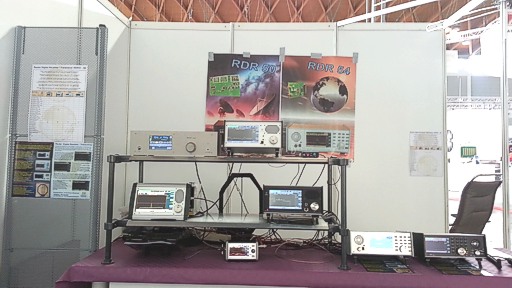 |
|
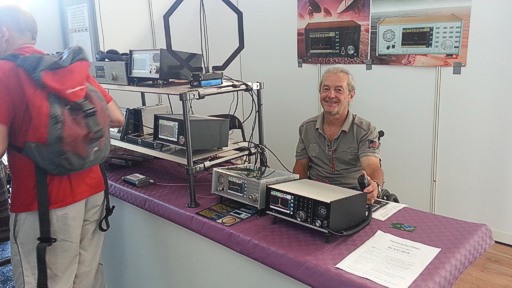 |
|
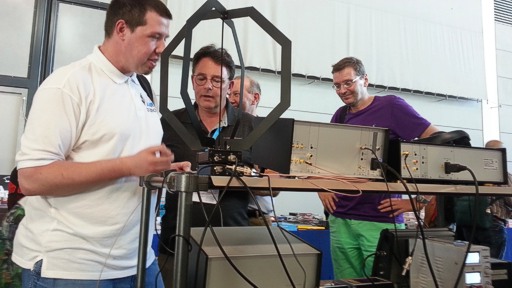 |
|
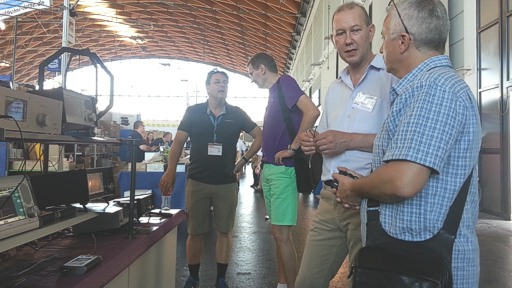 |
|
|
We really enjoyed the competent conversations and the vast interest! Unfortunately, we couldn't accept binding orders of our new devices. But soon there will be an extensive update regarding the RDR51 now officially called “Reuter Pocket”. We will also release a start date at which we will accept binding preorders.
Additional pictures at (German): http://ratzer.at/empfaenger/reuter-pocket
|
|
|
- 2015
|
20.03.2015
- Our international homepage is finally online! Still somewhat in beta, so please send us your feedback!
|
|
|
|
